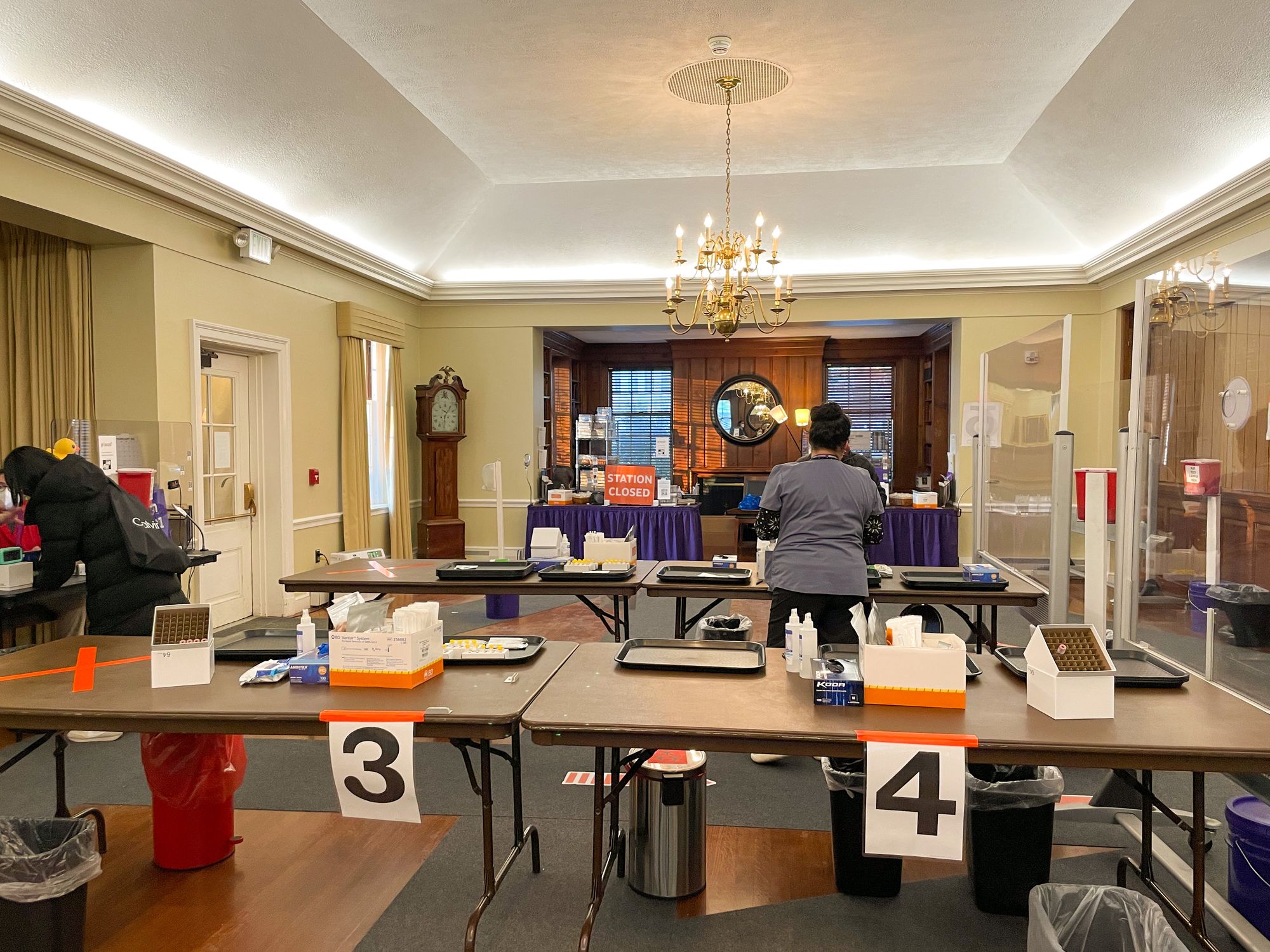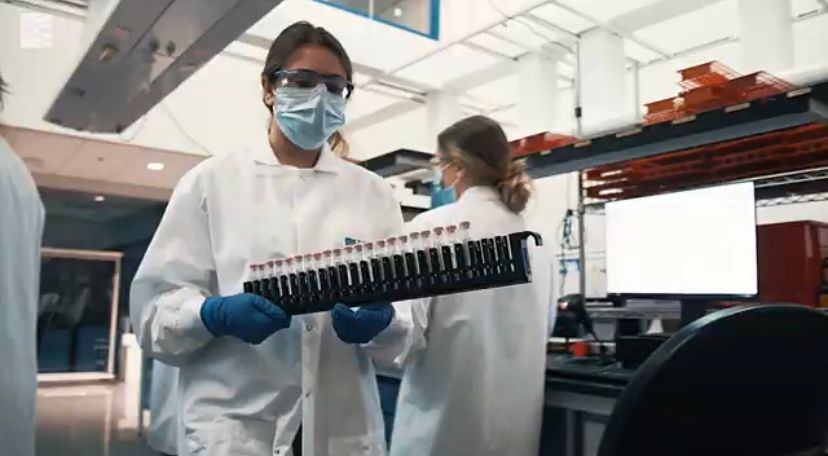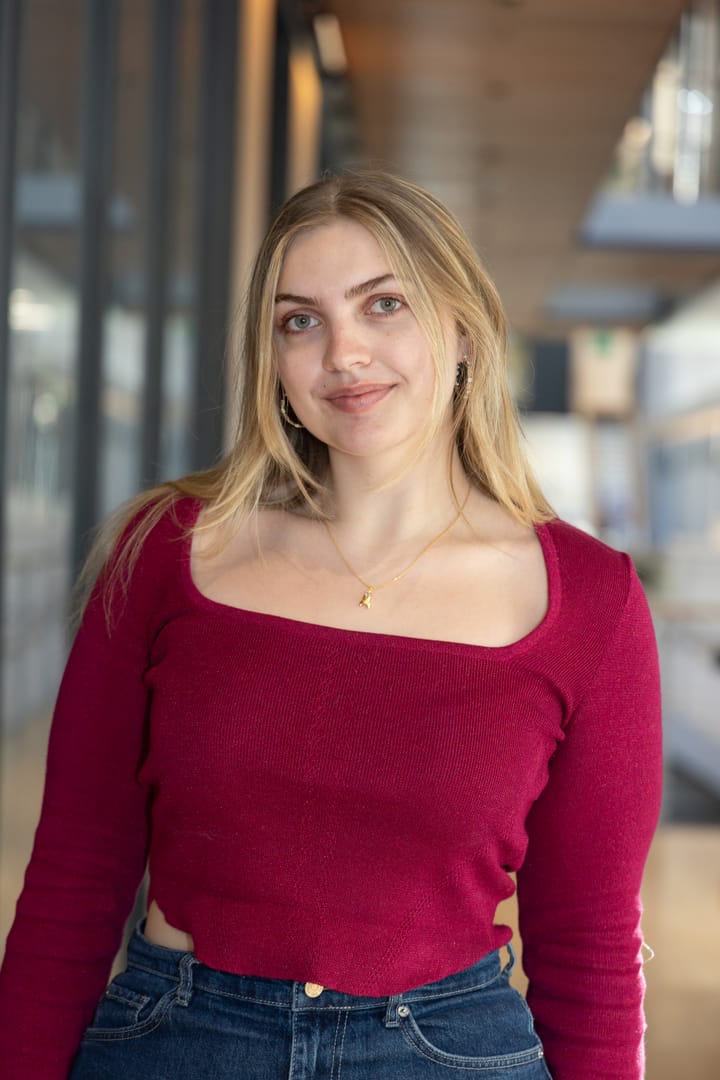From Nose to NoReply: Tracking the Journey of a PCR Test
The Student tracks the journey of an Amherst student’s Covid PCR test, from its collection at the Alumni House to its sequencing and result at the Broad Institute of MIT and Harvard.


All students are familiar with the ritual of a Covid PCR test: double check the label, uncap the vial, take out the swab, collect the sample and then place the vial in the red collection bin. The tests, which students were required to take twice a week in the fall, will be a thrice-weekly occurrence — on Sundays, Tuesdays and Thursdays — for the first two weeks of this semester. Despite such familiarity with the PCR procedure, many know little about the fate of testing samples. After the swab has left the nose, what is its next destination? How does a collected sample turn into a test result received via email the following day?
The PCR swab’s journey begins with a transport to The Broad Institute of MIT and Harvard, a biomedical and genomic research center located in Cambridge, Mass. At the Broad, the sample undergoes an automated system for Covid test-processing, with an average turnaround time of less than 24 hours. The culminating step of this process is the performance of an RT-PCR assay (the origin of the PCR test name) that measures the amount of viral genome present, rendering a positive, negative, or inconclusive test result that is made available on a patient’s clinical research sequencing platform.
The Student spoke with the Broad Institute’s Director of Communications David Cameron, Director of Student Health Services Dr. Emily Jones and Director of Emergency Management Matthew Hart to further elucidate the process of PCR diagnostic testing, reveal the costs associated with the procedure and gain a better understanding of the college’s partnership with the Broad.
The Journey to the Broad
Following collection at the testing center, samples are sorted and packaged for transport to the Broad Institute. According to Jones and Hart, “there are one to two couriers [who transport samples to the Broad Institute] a day. On student testing days this spring, couriers will depart campus at 3 p.m. and 8 p.m.” The college currently enlists the services of Courier Express, a Springfield-based incorporated company, to deliver the samples.
“A courier picks up the packaged samples from Alumni House and drives them directly to the [Broad Institute] laboratory in Cambridge. Once there, the lab processes the samples and provides the college and our community members with their results,” Hart wrote.
According to Cameron, after arriving at the doorstep of the Broad, the samples are ushered into the seam sessioning step (the process of linking a physical sample to a patient’s information). This ensures that everyone receives their own test results. The Broad’s team of process development associates are then charged with adding a lysis buffer to samples, in order to negate the danger of the virus. Incubating test samples in a lysis buffer for 20 minutes allows for all viral RNA to be released.
Following lysis buffering, samples are passed on to the liquid handler, which executes the critical extraction step. The automated liquid handler puts samples onto a master plate, which is then loaded into a real-time q-PCR machine. The machine runs an assay which ultimately detects the presence, or lack thereof, of the Covid genome in the sample. The PCR test uses two “probes” to test for the presence of different regions of the Covid viral genome.
Put more simply, if the machine detects a strong enough signal of the virus’s genetic material on each probe, then the plate is marked as a positive test result. If a signal is undetected or negligible on both, then the result is negative. When only one probe detects the presence of the virus, it yields an inconclusive test result. Recipients of inconclusive results receive an email requiring them to retest as soon as possible.
Cameron also noted that false positive results are improbable. “Genuine PCR false positives are extraordinarily rare, if at all,” he said. “When people say ‘false positive,’ that usually refers to[when] the PCR detects the virus, but the virus is at such a low quantity that the person does not get symptoms. In that sense, the virus's presence is ‘subclinical.’ That's the tradeoff with a test that is as sensitive as the PCR.”
Once a test result has been determined, Broad Institute staff input it into the Broad’s Clinical Research Sequencing Platform, and the tester is notified of their result via email. Hart and Jones relayed that “[the] current system sends an email to the patient, as well as the staff members who are responsible for notification and support, as soon as the result is released by the lab.”
After a sample has been processed, Cameron mentioned, it has reached the end of the road — it cannot be reprocessed.

The Numbers: Pricing and Total Tests Collected
The high cost and scarcity of Covid testing has been covered and commented on throughout the pandemic. And yet, the Amherst community has had continuous access to both rapid and PCR testing for over one and a half years. The nationwide shortage of testing has led many to question how much funding the college has spent on its testing program.
Jones and Hart said that “the budget for testing (the Broad is now charging $8 per test) is covered by the college and is eligible for reimbursement from FEMA [Federal Emergency Management Agency].” They emphasized that they believe the testing program, along with other protocols such as providing masks, to be a critical investment in keeping the community safe and allowing for in-person programming on campus.
During the fall semester, the college collected an average of more than 5,500 tests from approximately 3,000 individuals each week. According to an estimation calculated by The Student, between convocation (Aug. 29) and the final day of finals period (Dec. 17), the college spent about $704,000 on q-PCR tests eligible for FEMA reimbursement.
The Partnership with the Broad
In March 2020, the Broad Institute converted its highly-automated Clinical Laboratory Improvement Amendments-certified laboratory into a processing center for Covid-19 tests. Later on in May, the Association of Independent Colleges and Universities in Massachusetts (AICUM) reached out to the Broad for support in implementing a large-scale testing initiative. To facilitate the return of in-person higher education, the Broad initially partnered with 108 colleges and universities, Amherst being one of them.
Cameron said, “Amherst was listed in our initial announcement, so it was definitely among the first [to join forces with the Broad].” At the time, the Broad charged a cost of $25 per test, significantly lower than the $100 to $150 per test charged by some private labs.
From the beginning, the Broad has provided an indispensable service, Jones and Hart said. “The Broad has been a great partner to us and many other institutions and communities from the start of the relationship. When we first launched our testing program, it was important to choose a partner that we had confidence in because the entire enterprise was so new to everyone,” they stated.
The college trusted the institute from the get-go, they continued, because “the Broad has an excellent reputation and is affiliated with MIT and Harvard. In addition, and importantly, it was one of the first and only organizations in the region to offer Covid-19 testing at affordable prices.”





Comments ()